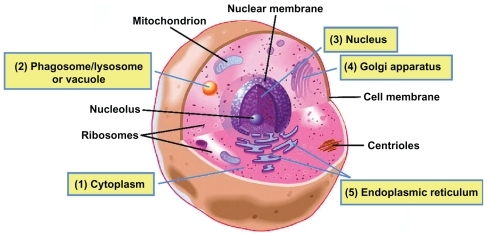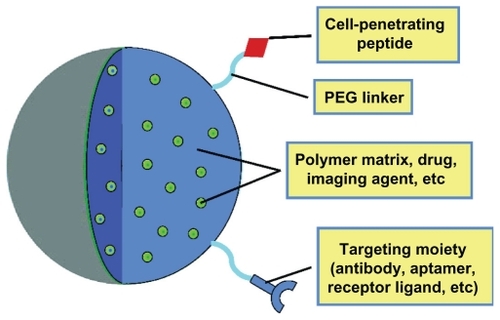Figures & data
Table 1 Summary of disease-causing intracellular pathogens
Table 2A Current therapeutic strategies against selected viral pathogens
Figure 1 Potential locations of intracellular pathogens. In a typical eukaryotic cell, pathogens may be internalized via endocytic mechanisms before establishing their intracellular life cycle. Pathogens may reside in various locations, including the cytosol, phagosome, lysosome, or vacuole compartments and the nucleus, and some may associate with the Golgi apparatus or endoplasmic reticulum. (1) Cytosol (Francisella tularensis,Citation57 Listeria monocytogenes,Citation58 ShigellaCitation64). (2) Phagosome/lysosome or vacuole (Mycobacterium tuberculosis,Citation43,Citation45 Brucella species,Citation15 Salmonella,Citation52,Citation53 LegionellaCitation56). (3) Nucleus (herpes simplex virus,Citation1,Citation60 HIVCitation59). (4) Golgi apparatus (ChlamydiaCitation61). (5) Endoplasmic reticulum (hepatitis C virus,Citation65 Brucella,Citation63 Toxoplasma gondii,Citation66 Legionella pneumophiliaCitation62,Citation64).
Note: Reproduced with permission from the Scripps Institution of Oceanography, UCSD.
Abbreviations: HIV, human immunodeficiency virus; UCSD, University of California, San Diego.

Table 2B Current therapeutic strategies against common intracellular bacterial pathogens
Table 3 Examples of biocompatible nanoparticles discussed in this review
Figure 2 Components of an “ideal” nanoparticle for intracellular drug delivery. The important components of a nanoparticle used for intracellular drug delivery include choice of nanomaterials (eg, polymer, gold), targeting molecules, cellpenetrating peptides (to promote internalization), and the incorporated drug molecules of interest.
Abbreviation: PEG, polyethylene glycol.
